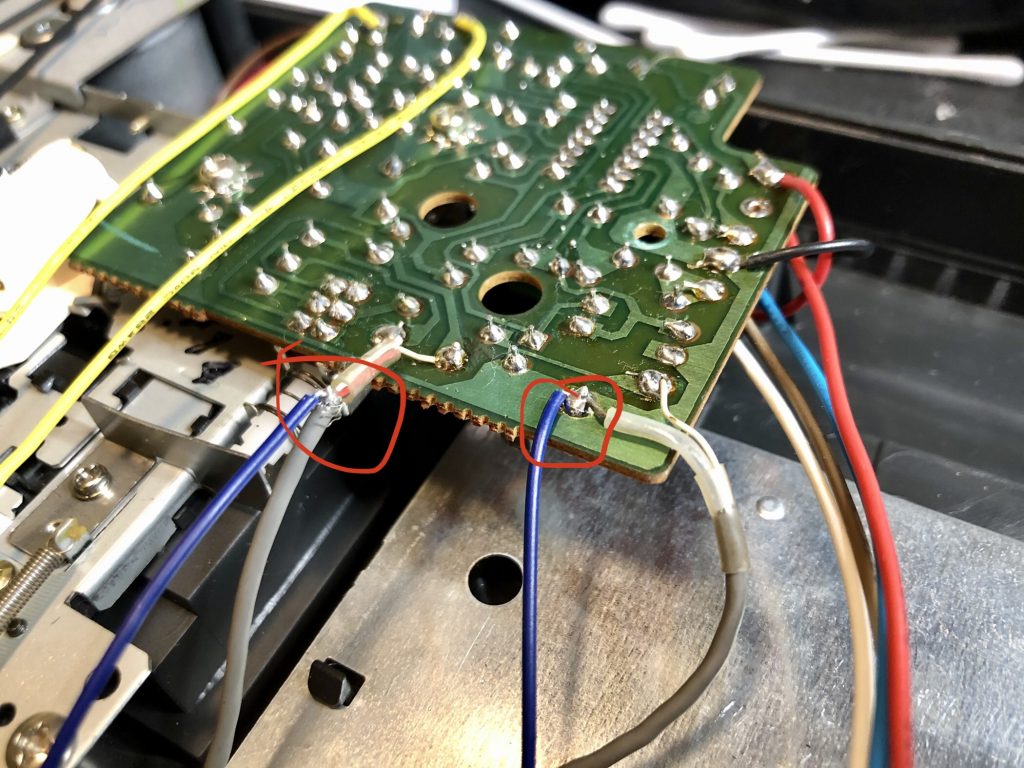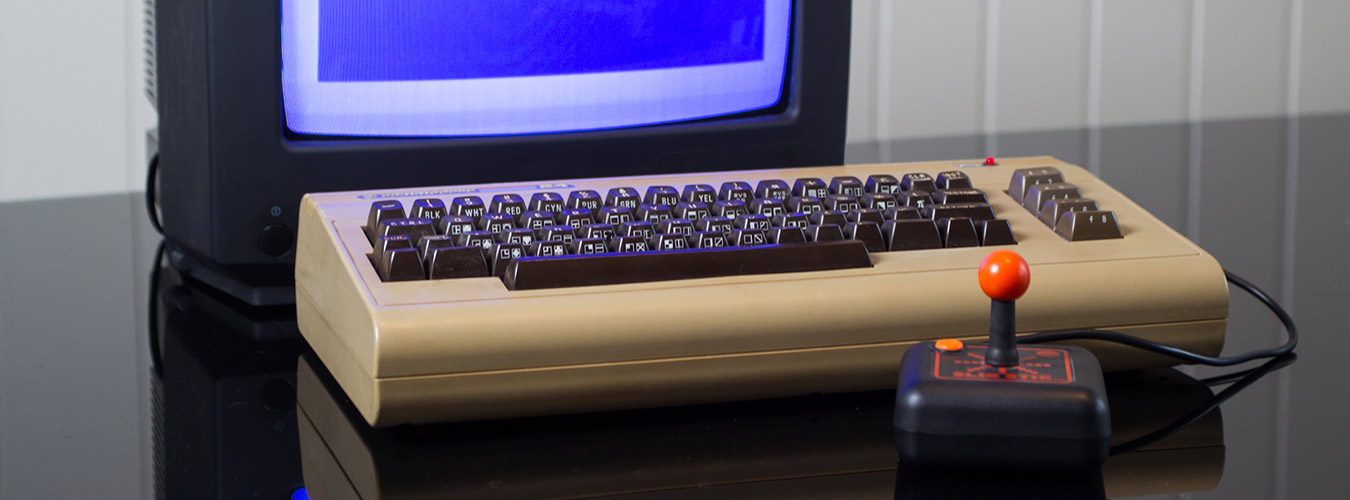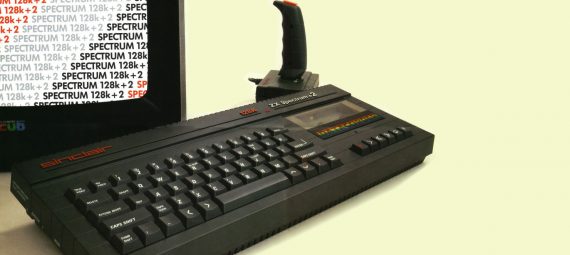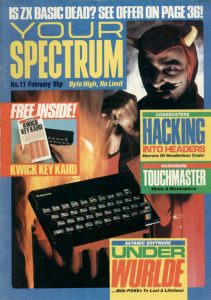Released 1987: When Amstrad took over Sinclair’s computer business in 1986, a change in direction for the Spectrum was not long forthcoming. In early 1987, the change came with the launch of the Spectrum +2. It was very different from any previous Spectrum, coming with a proper typewriter keyboard and built-in tape recorder and twin joystick ports. Externally, it was very similar to Amstrad’s CPC464.
Facts
- Type: Home computer
- Developer: Amstrad, Sinclair Research
- Released: 1987
- Discontinued: 1992
- CPU: Z80A@3.5 MHz
- Memory: 128 KB
- ROM: 32 KB
- Video: 256 x 192 (32 column x 24)
- Audio: 1 chn beeper (7 octaves)
- Storage: Built-in tape recorder, optional ZX Microdrive
- Predecessor: ZX Spectrum 128, ZX Spectrum+
- Successors: Spectrum +3
Internally, there were far fewer changes. The firmware was not greatly different from the earlier Spectrum 128, but the ROM had a few changes, causing more compatibility problems with earlier products. It was released in two versions – the +2 in a grey case and the +2A in black. The latter version was, in fact, a Spectrum +3 minus the built-in disk drive.
The familiar quality control problems were, thankfully, largely absent with the +2. The machine was built in Taiwan (making it the first Sinclair product built outside the UK) and Amstrad’s greater emphasis on quality control made it far more reliable than the first Spectrums.
Amstrad also took a very different line in marketing the Spectrum +2. Unlike Sinclair, Amstrad did not attempt to market the Spectrum as anything other than a games machine and sold it in packages such as the “James Bond 007 Action Pack” (with bundled games and a light gun). This approach was extremely successful, and the Spectrum +2 sold very well.
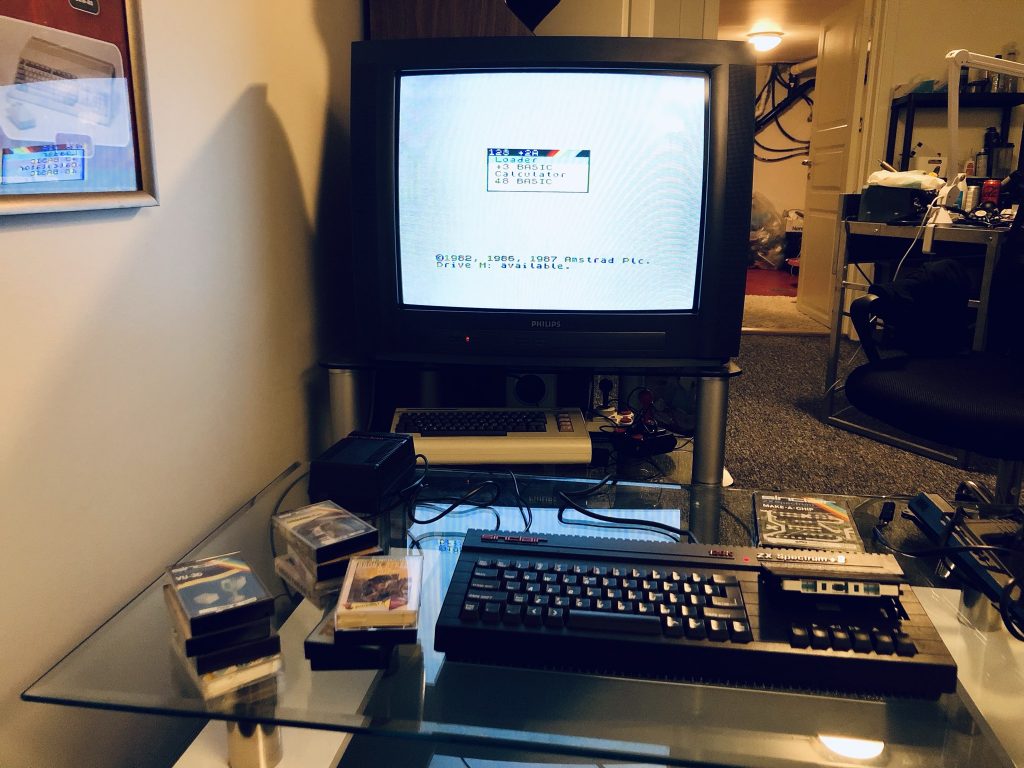
ZX Spectrum – family
The ZX Spectrum is a family of 8-bit personal home computers developed by Sinclair Research. It was first released in the United Kingdom on 23 April 1982. Many unofficial clones were released around the world throughout the 1980s. Referred to during development as the ZX81 Colour and ZX82,it was launched as the ZX Spectrum by Sinclair to highlight the machine’s color display, compared with the black and white display of its predecessor, the ZX81. The Spectrum was released as eight different models, ranging from the entry level with 16 KB RAM released in 1982 to the ZX Spectrum +3 with 128 KB RAM and built in floppy disk drive in 1987. Altogether they sold over five million units worldwide (not counting clones).
The Spectrum was among the first home computers in the UK aimed at a mainstream audience. The popularity of the ZX Spectrum led to many companies producing software and hardware for the machine. Licensing deals and clones followed, earning Clive Sinclair a knighthood for services to British industry.
The Commodore 64, Dragon 32, Oric-1, Oric Atmos, BBC Micro and later the Amstrad CPC range were rivals to the Spectrum in the UK market during the early 1980s. The machines was officially discontinued in 1992.
The Sinclair models featured audio line in and out, in the form of an “ear” and “mic” socket. An external tape recorder was needed to load the majority of software released, or the ZX Microdrive. Either socket could be connected to headphones or an amplifier as an audio output, although this would not disable the internal speaker.
My “ZX Spectrum +2A”
Everything seemed to work, except there was no load signals getting to the computer when playing a tape. First I re-soldered all components on the tape recorder controller card, with no luck. Then I removed tape recorder unit completely to check the reader head. Then I noticed that a thin cable with two leads also had a shielding that provides GND for the reader head. The shielding in the thin cable was not visible on the controller board side, so I gently cut away some plastic from the cable and found the shielding. I gently soldered on a wire, tryin to not melt the plastic of the two other leads in the very thin cable. Then I soldered the wire to GND on the controller board. Success, machines was getting load signals after this.
